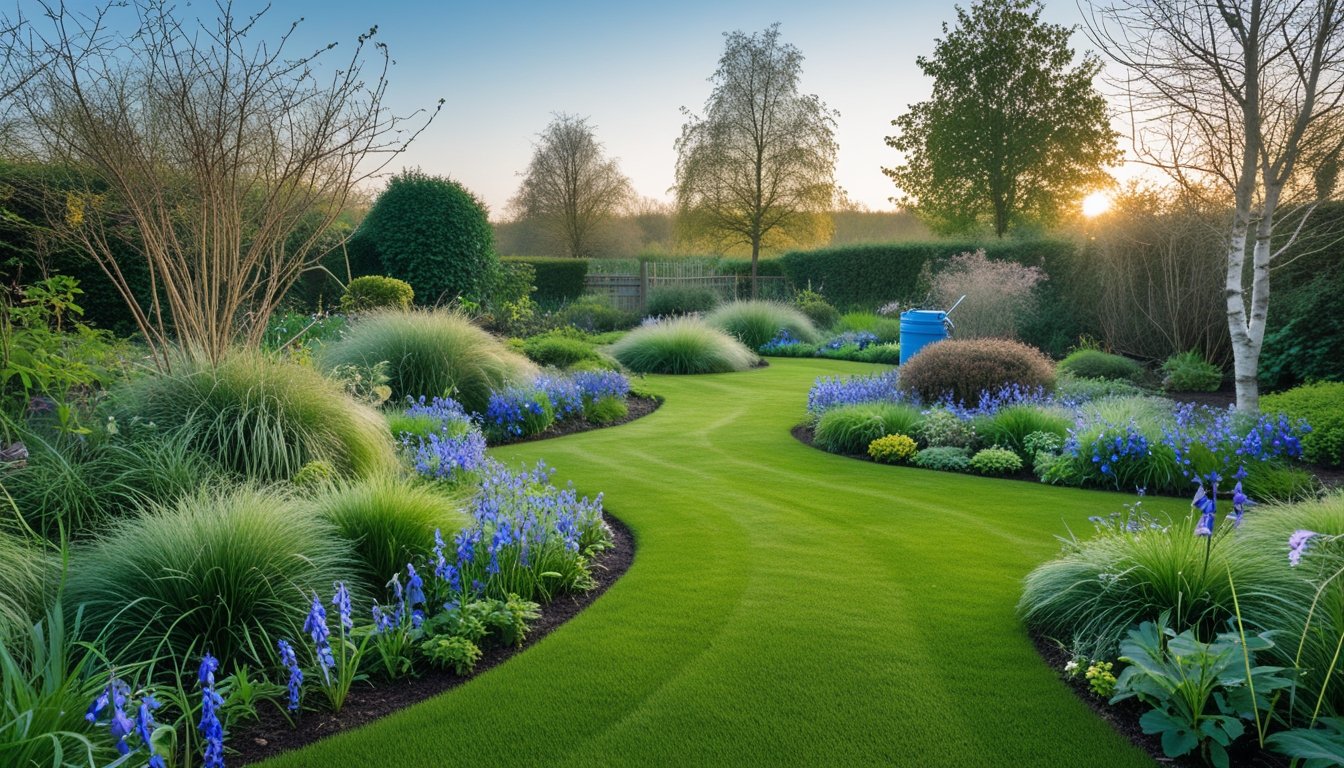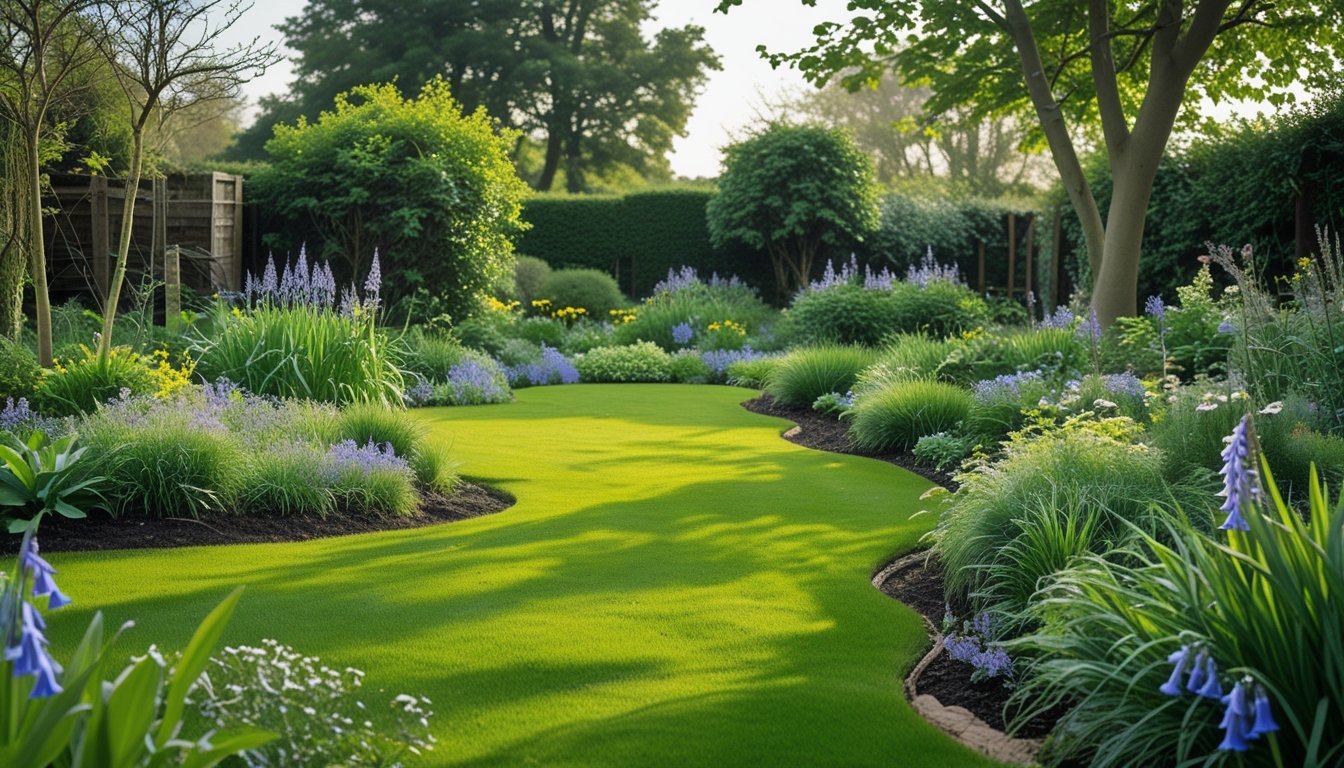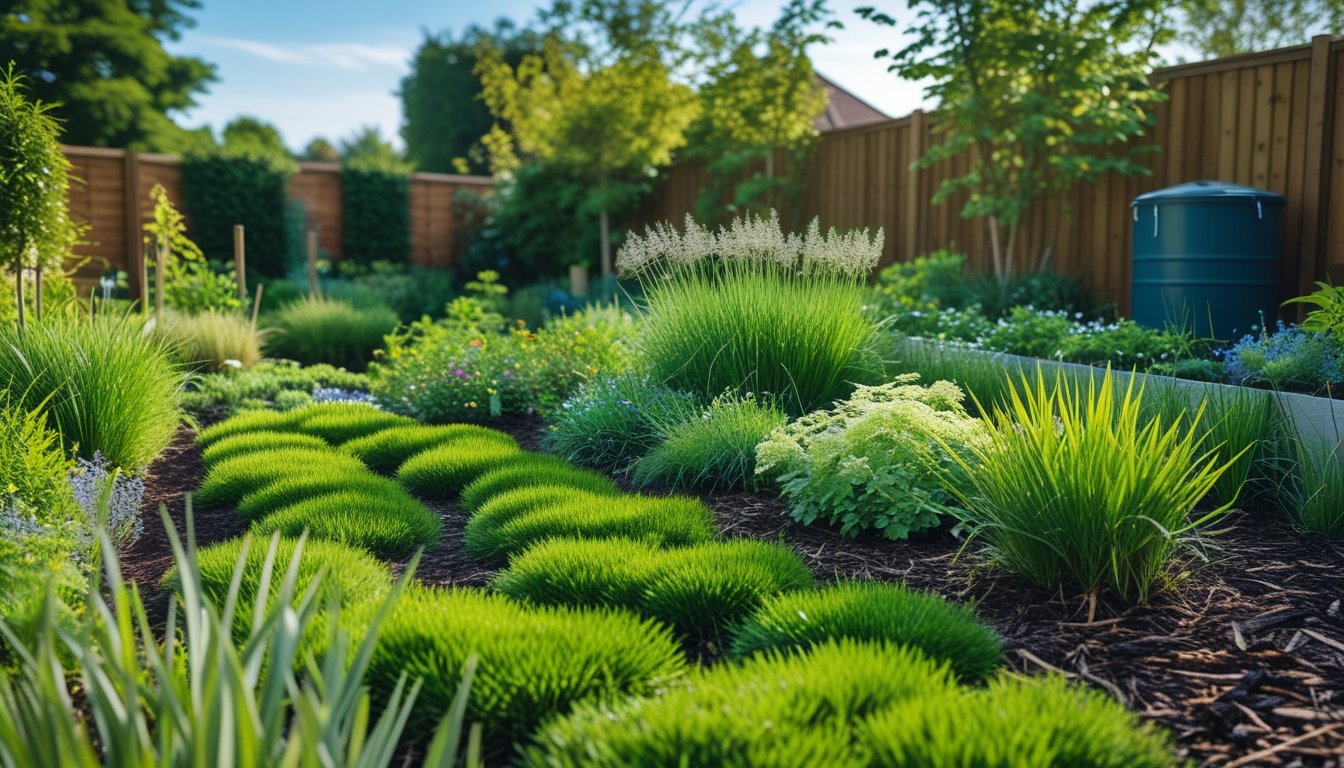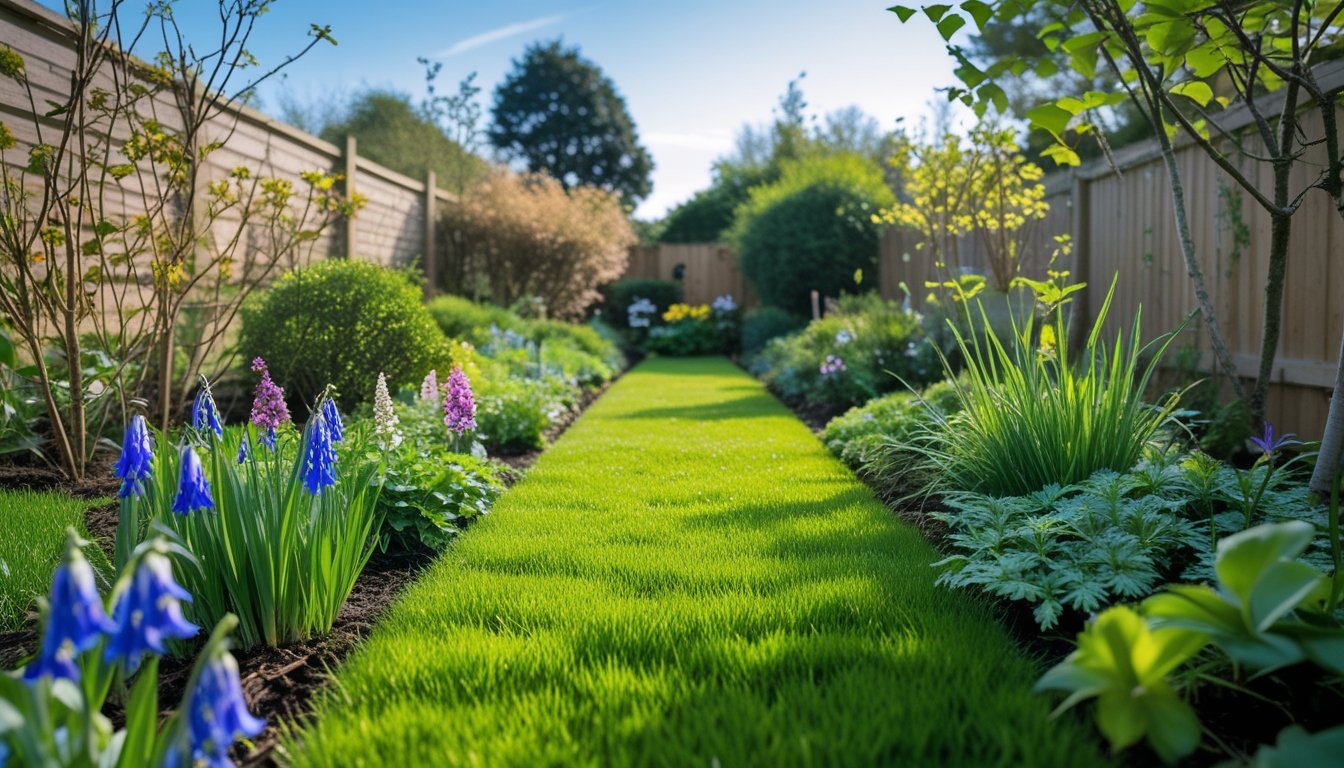Late updated: 08 Oct 2025 13:10
Written by: Emily Thornton
Crafting A Water-Efficient Lawn Using Native UK Plants: Sustainable Landscaping Tips
Embracing the challenge of creating a sustainable and water-efficient lawn, we turn our focus to the power of native UK plants. Native species are not only perfectly adapted to the local climate, but they also offer a sustainable solution by requiring minimal watering and maintenance. For garden enthusiasts looking to conserve water while enhancing the beauty of their lawns, native plants provide an ideal balance between aesthetics and eco-friendliness.

The benefits extend beyond just water conservation. Native plants support local wildlife, offering habitats for birds, insects, and other creatures, effectively turning our gardens into vibrant ecosystems. It's not just about saving water; it's about fostering biodiversity in a way that is both practical and visually appealing.
Exploring the various types of native UK plants reveals an opportunity to replace traditional lawns with diverse options that are not only resilient but also contribute positively to the environment. As we delve into the strategies for implementing these water-efficient alternatives, we find that transitioning to native plants is simpler than many think and yields a rewarding transformation for any outdoor space.
Key Takeaways
- Native UK plants require minimal water and upkeep.
- They enhance biodiversity by supporting local wildlife.
- Transitioning to native species improves lawn resilience.
Core Strategies For A Water-Efficient Lawn With Native UK Plants

Transforming our lawns into sustainable, water-efficient spaces involves key strategies, from reducing traditional grass areas to selecting native plants that thrive with minimal water. By integrating these methods, we can create resilient landscapes that not only conserve resources but also withstand climate changes.
The Benefits Of Reducing Traditional Lawns
Traditional lawns, while lush and green, require excessive water and maintenance. Reducing these expanses helps conserve water and enhances sustainability. Native grasses and plants need significantly less irrigation.
Incorporating xeriscaping principles can further decrease water usage. This strategy involves designing landscapes to reduce or eliminate the need for irrigation. By doing this, we contribute to resource conservation and create a more sustainable environment.
Benefits of Reduction:
- Water Conservation: Less water use benefits the environment.
- Reduced Maintenance: Decreases time and resources needed for upkeep.
- Climate Adaptation: Supports resilience against climate fluctuations.
Selecting UK Native Plants For Drought Resistance
Native UK plants are adapted to local conditions, making them ideal candidates for a water-efficient lawn. Drought-resistant species such as lavender and heathers require less water. By choosing plants that naturally thrive in the UK climate, we can ensure our lawns are both beautiful and sustainable.
When selecting plants, consider their natural habitat and water needs. Opt for varieties that can tolerate longer dry periods. Native species also support local wildlife, enhancing biodiversity. With the right selection, our landscapes will thrive with reduced dependence on artificial irrigation.
Popular Native Options:
- Lavender
- Sedums
- Heathers
Planning Your Water-Saving Lawn Conversion
Crafting a water-efficient lawn begins with a well-thought-out plan. Assess your existing lawn's layout and soil type. Identifying these elements helps determine the best approach for conversion. Reducing lawn size and selecting appropriate plants are critical steps.
Consider methods like sheet mulching or replacing sod with native plants. Incorporate features such as efficient irrigation systems or mulches to retain soil moisture. Steps For Conversion:
- Analyse Your Lawn: Evaluate soil and layout.
- Choose Native Plants: Select species suited to conditions.
- Implement Efficient Solutions: Use mulching and irrigation wisely.
By carefully planning, we ensure a smooth transition to a sustainable, water-efficient lawn.
Enhancing Biodiversity And Resilience Through Lawn Alternatives

Using alternative lawn solutions can significantly boost biodiversity and resilience in our gardens. By shifting from traditional grass lawns to diverse plantings, we can create environments that support a range of wildlife and enhance natural resilience. The incorporation of wildflower meadows, support for pollinators, and soil enhancement through mulch play pivotal roles in this transformation.
Incorporating Wildflower Meadows And Wilding
Wildflower meadows are crucial in increasing biodiversity. By introducing a mix of native wildflower species, we can provide varied habitats and food sources for insects, birds, and small mammals. In the UK, traditional meadows have decreased significantly, making wildflower meadows an important conservation tool.
Wilding, or re-wilding garden spaces, involves allowing native plants to thrive without excessive control. This practice can range from managing grass to grow taller for wildflowers to establishing areas where nature takes its course. Through wilding, we can recreate habitats conducive to a variety of life forms, enhancing the ecological web.
Supporting Pollinators And Local Wildlife
Supporting pollinators like bees and butterflies strengthens the ecological balance. Native plants are excellent choices for this. They have co-evolved with local pollinators, making them efficient providers of nectar and pollen. Certain plants like clover and lavender are both beautiful and functional, attracting countless pollinators.
Food security also gets a boost through supporting pollinators in gardens. With the global decline of pollinators, efforts at the local level can have wide-reaching impacts. By creating pollinator-friendly environments, we indirectly support agricultural productivity and the health of surrounding ecosystems.
Soil Improvement And Mulch Usage
Healthy soil is the backbone of a resilient garden. Using mulch enhances soil health by retaining moisture, suppressing weeds, and slowly adding nutrients as it decomposes. Mulch can range from organic materials like bark and leaves to more durable substances like gravel.
Improving soil quality also promotes root growth and microbial activity, key elements in a robust ecosystem. When we focus on enhancing the soil structure, we set our garden up for success, supporting the growth of native plants and aiding in water-efficient landscaping. Employing these techniques not only maintains soil health but actively contributes to our broader ecological objectives.
Frequently Asked Questions

Creating a water-efficient lawn with native UK plants involves selecting the right species and implementing effective design and maintenance strategies. We'll address common questions you might have on choosing plants, designing your space, and ensuring optimal watering.
What are the best native UK plants for creating a drought-resistant garden?
Some of the top choices include native grasses like Festuca rubra and drought-tolerant wildflowers like meadow buttercup and yarrow. These plants are adapted to the UK's climate and naturally require less water.
How can I design a garden that requires minimal watering?
Begin by grouping plants with similar water needs and choose a variety that thrive in dry conditions. Implementing mulch and using soil amendments like compost can help retain moisture effectively.
What are the primary considerations for maintaining a water-efficient lawn in the UK climate?
Focus on soil health, regular mulching, and choosing plants suited for the typically moist but changeable British weather. Regularly monitor your lawn's condition and adjust watering techniques during dry spells.
Can native wildflowers be used to reduce the watering needs of a garden?
Indeed, native wildflowers such as cowslips and oxeye daisies not only enhance biodiversity but also minimise watering requirements, as these species naturally adapt to local rainfall patterns.
What techniques can be employed to conserve water in a UK garden environment?
Consider techniques like rainwater harvesting, installing drip irrigation systems, and incorporating xeriscaping elements. These methods help manage water use efficiently throughout changing seasons.
How often should a water-efficient lawn with native plants be watered?
Watering frequency depends on the specific needs of your plants and local weather conditions. Generally, established native plants require less frequent watering, possibly only during extended dry periods.
